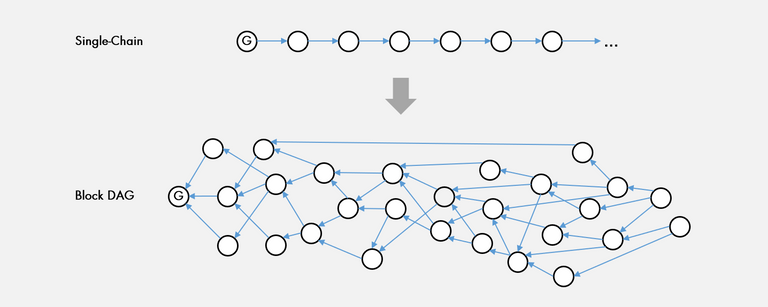Taraxa is specifically built to track informal transactions with audit trails for fast logic processing, speculative execution, low latency and true finality, all built on a next generation Block DAG topology.
Taraxa, a fast and scalable public ledger specially designed to minimize business problems. Taraxa is implementing the following key technical innovations:
Inclusive Block DAG protocol that maximizes throughput without compromising security
Fair and efficient offers allowing the POS system to issue fair, efficient and inconsistent block offers
Asynchronous immediate termination eliminates the risk of reverting and reorganizing the DAG
Speculative execution to speed up stateless transaction processing
Runlevel optimization that dramatically increases the execution speed of virtual machines.
As blockchains evolve, innovative networks such as Bitcoin and Ethereum are facing scalability bottlenecks. One of the key metrics for scalability is total network throughput, usually measured in transactions per second (TPS). However, for single-chain topologies, an increase in TPS necessarily means a decrease in security, the restoration of which negates any advantages of TPS.
To increase the TPS, the network can increase the block size β and / or the rate at which the block γ is generated. Increasing β necessarily increases the network latency δ because a larger block of data takes longer to transmit. This, in turn, reduces the timeliness with which all nodes learn about the block, thereby increasing the likelihood of branching. Increasing γ leads to an increase in the number of blocks offered on the network, but since only one block can be accepted in a single-chain topology, more blocks actually increases the number of choices that nodes must incorrectly bet on the longest chain. which leads to branching. Therefore, we see a tough trade-off between TPS and security. The loss of security is due to the fact that honest nodes are not coordinated, while a malicious adversary can coordinate their work outside the chain to create a set of blocks without branches and thus determine the longest chain.
βγ ∝ TPS: block size and block generation increase TPS
β ∝ δ: increase block size network delay
δγ ∝ branching: network latency and block generation increase branching (decreases security)
One elegantly simple approach is to abandon the single-chain approach and adopt an inclusive approach in the form of a DAG [3] or more specifically a block DAG. In a block DAG, blocks can be offered by multiple nodes, all of which will be accepted if valid. In addition, unlike a single-chain topology, each block can reference not only one parent, but also multiple parents — in fact, as many parents as the offering node sees hints in its current view of the DAG. An important property of such a DAG is that it removes the hard tradeoff between TPS and security, since the network can reliably increase β without compromising security. To understand why this is so, remember that increasing β will increase branching. However, instead of following the simple rule of longest linear blockchain chain, the verified parent and clues recorded in each block are used to provide important information for ordering the blocks. With no additional voting overhead, the ability for one block to point to another is an actual vote that blocks referenced as parent and hints should be ordered before the new block. This key property can be combined using a GHOST rule to create an inclusive block protocol that provides security regardless of branching speed.
However, DAG block topology is not without its own set of problems, here are a few,
Convergence order
Finality (confirmation delay)
Block efficiency - overlapping block content
Taraxa intends to address these issues.

Congratulations @beertourism! You received a personal badge!
You can view your badges on your board and compare yourself to others in the Ranking
Check out the last post from @hivebuzz: